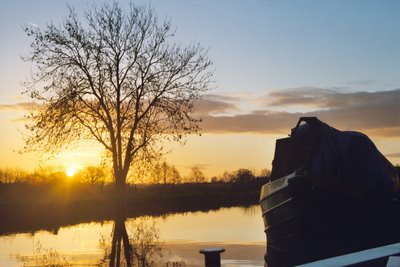
First thing I did when we last went up to Warrior was to hang up the new handbowl and see how it looked in the cabin. Gorgeous, I think is the answer.
The cabin is really starting to look nice now. The floor is staying stuck down largely OK, but is showing a tendency to hang very tenaciously onto dirt; that I suppose is the downside of it having quite a good non-slip surface. The rug lives on the sidebed - heaven forbid that it should go on the floor; people aren't even allowed to sit on it! I can't remember where we (Jim) got the lamp, but it's rather good. We bought an Osram 'Dot-It' battery LED light as an experiment, and it was quite good, but when we went back to B&Q for some more they'd stopped selling them. Anyway, I've blu-tacked it inside the lamp to quite good effect.
Next little job is to replace all the latches that hold the cupboards shut. Unaccountably, where so much trouble has been taken elsewhere, these are all galvanised rabbit hutch catches. We've stocked up on brass ones to replace them with, and impulse-bought a smashing pair of brass hinges for the bed cupboard. This was in Dockerills, a brilliant old fashioned ironmongers in Brighton, which is also our source for fire cement, Brasso (I have no truck with newfangled products that are supposed to make brass polishing easier; it takes all the fun out of it) and many other requisites. Dockerills are famous for their shop cat, Ginger, who died a few years ago at the age of 24. I only knew him in his later years, when he slept on the counter in his own little bed, but he was a Brighton institution.

Finally, I put up the floor level curtains. Because I forgot to take them home, I had to sew all the velcro on by hand (oh well, I'm supposed to like doing things the old fashioned way). The stick on part of the velcro has been reinforced with a few felt nails, kindly donated by Jez, who got himself into such a state as I have never seen in the course of blacking his boat. I really dislike stick-on velcro and all it stands for, but there wasn't any real alternative here, and anyway, it is hopefully a temporary solution until we get some doors. Looks all right for now though.
By the way, anyone know what's happened to Mike's Globetrotter blog?
















